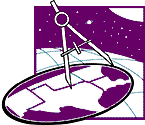Classroom Compass |
Content Standard for Grades K-4: Science as Inquiry
|
Content Standard for Grades K-4: Science as Inquiry
Although there is logic to the abilities outlined in this inquiry standard, a step-by-step sequence or "scientific method" is not implied. In actual practice, student questions may arise from their previous investigations, planned classroom activities, or questions they ask each other. For instance, if children ask each other about how animals are similar and different, an investigation might arise into characteristics of organisms they can observe.
Full inquiry involves asking a simple question, completing an investigation, answering the question, and presenting the results to others. In general, elementary students are developing the physical and intellectual skills of scientific inquiry. They can design investigations to try things to see what happens—they will focus on concrete results of tests and even entertain the idea of a "fair" test, a test in which only one variable at a time is changed. They may have difficulty with experimentation as a process of testing ideas and the logic of using evidence to formulate explanations.
The above comments are reprinted with permission from the Draft National Science Education Standards. Copyright 1994 by the National Academy of Sciences. Courtesy of the National Academy Press, Washington, D.C.
Content Standard for Grades 5-8: Science as Inquiry
At grades 5-8, students can begin to recognize the relationship between explanation and evidence—that background knowledge and theories guide the design of investigations, the types of observations, and the interpretations of data. In turn, the experiments and investigations students conduct become experiences that shape and modify their background knowledge.
Teachers of science for middle school students should note one very important research finding. Students tend to center on evidence that confirms their current beliefs and concepts (personal explanations) and ignore, or fail to perceive, evidence that varies from their current conception. It may be important for science teachers to challenge current beliefs and concepts and provide scientific explanations as alternatives.
Oral or written reports that present the results of the inquiry should be a frequent occurrence in science programs during the middle years. To help focus student thinking, their discussions should center on such questions as "How should we organize the data to present the clearest answer to our question?" or "How should we organize the evidence to present the strongest explanation?" An important element of doing inquiries is the language and practices evident in the classroom. Students need opportunities to communicate scientific explanations and ideas or otherwise use the knowledge and language of science.
The above comments are reprinted with permission from the Draft National Science
Education Standards. Copyright 1994 by the National Academy of Sciences. Courtesy
of the National Academy Press, Washington, D.C.
Content Standard for Grades 9-12: Science as Inquiry
Public discussions of the students' proposed explanations, and peer review of investigations replicate an important aspect of science. Talking with peers about their experiences with science helps students develop meaning and understanding. Their conversations clarify the concepts and processes of science; the conversations help them make sense of science content and methods.
Science teachers should engage students in conversations that focus on questions, such as "How do we know?" "How certain are you of those results?" "Is there a better way to do the investigation?" Questions like these make it possible for students to analyze data, develop a richer knowledge base, reason using science concepts, make connections between evidence and explanations, and recognize alternative explanations. Ideas should be examined and discussed in class so that other students can benefit from the feedback. Teachers of science can use the ideas of students in their class, they may use ideas from other classes, and they may use ideas from texts, databases, or other sources, but scientific ideas and methods should be discussed.
The above comments are reprinted with permission from the Draft National Science
Education Standards. Copyright 1994 by the National Academy of Sciences. Courtesy
of the National Academy Press, Washington, D.C.
Classroom Compass Back Issues: Issue 2.1 Contents: Previous : Next
